Kentucky Fried Zero: Act 3 – English Edition
This is the third part of our analysis of Kentucky Route Zero.
Original by Magnus Hildebrandt, translation by Josefiene Pertosa
Deutsche Versionen: Teil 1, Teil 2, Teil 3
English versions: part 1, part 2, part 3
Lateness, delayed projects and the kind of Faustian bargains one strikes in order to not have to give up. Just as we did in the previous parts, we will once again delve deep into the background of and inspiration for Cardboard Computer’s surrealistic adventure. This time it’s about mathematics, romantic poetry, Olivia Newton-John and why Heaven on Earth is almost always destined to fail. Before we go on, here is your obligatory spoiler warning. First spoiler: Olivia Newton-John will not make an appearance.
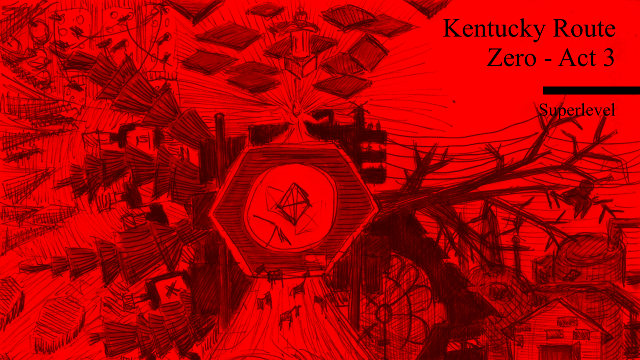
Cardboard Computer already borrows heavily from Samuel Beckett in its free intermittent episode The Entertainment. While his modern pantomimes have been alluded to quite strongly, his most widely known piece has only been hinted at. This changes at the beginning of the third Act of Kentucky Route Zero. The referencing starts right at the location of our car breakdown, which exactly corresponds to Beckett’s stage direction: „A country road. A tree. Evening.”
“Estragon: And now it’s too late. / Wladimir: Yes, now it’s night.”
– Samuel Beckett, Waiting for Godot
The drama Waiting for Godot (1952) consists of two acts of nearly identical content in which two vagabonds, Estragon and Vladimir, are waiting close to a country road for the arrival of a person of no further description who – what follows is a spoiler for a 60-year-old stage play – will not appear; not even at the very end. In the meantime, the two of them pass their time with absurd discussions and games, some of which – like the map discussion or the one about the nature of a tree – are repeated nearly word for word in Kentucky Route Zero. Samuel Beckett has always refrained from commenting on Waiting for Godot which is why to this day the theories in circulation diverge greatly regarding their content and meaning.
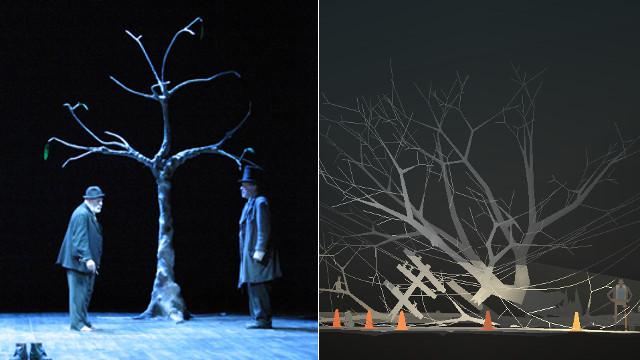
However, the character of the mechanical singer „Junebug” is not only an allusion to Beckett. It also conveys a classical literary motif: the female android. The archetype of this theme is the Pygmalion Story from Greek myth. One version of Pygmalion can be found in Ovid’s Metamorphoses. In the story, the misogynist sculptor Pygmalion creates a statue of a woman with which he then falls in love. The gods then bring the sculpture to life but forego adding qualities some might consider essential such as language, emotions or free will.
This story forms the basis for the very popular literary theme of the perfect woman, a woman who could only be created by men – which has always, and rightfully so, been a cornerstone of feminist critique. However, the Pygmalion myth is also often used to criticize common male expectations, for instance, in the use of the mechanical puppet Olimpia in E.T.A Hoffman’s The Sandman. Arguably, the most popular modern interpretation of the narrative is George Bernard Shaw’s Pygmalion and its Broadway musical adaptation My Fair Lady. Here, the phoneticist Henry Higgins attempts to turn the poor flower girl Eliza Doolittle into a Lady by way of elocution lessons. Joseph Weizenbaum named his computer program, ELIZA, who already played an important role in the first Act of Kentucky Route Zero, after the play’s female protagonist.
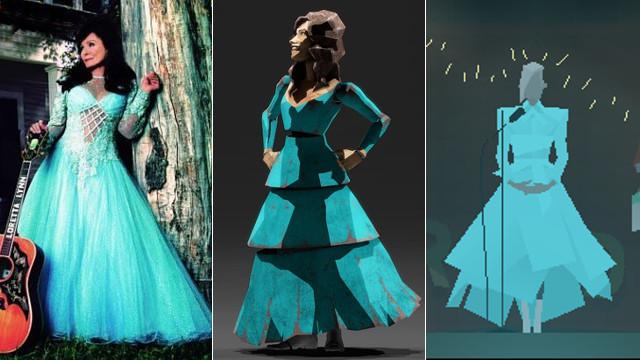
Early on, during the Kickstarter campaign for Kentucky Route Zero, Junebug had a strong visual resemblance to Kentucky-born country singer Loretta Lynn, whose biography has been turned into an Oscar-premiered film titled Coal Miner’s Daughter (1980). Even though Junebug’s final appearance is closer to that of a new wave singer, Loretta Lynn is still a clear source of inspiration. Lynn’s husband Oliver, for example, was also known as “Doolittle Lynn”, a name similar to that of „Lem Doolittle”, another character in Kentucky Route Zero. Another moniker of his was “Mooney” because for a long time he made a living off selling moonshine, illegally distilled booze. In addition, Junebug’s background story, a pop icon who made her way from the bottoms of the mines to the very top, sounds a lot like Loretta Lynn’s own biography.
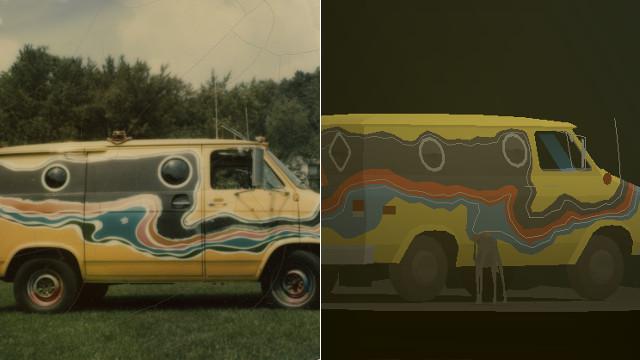
Going back to Route Zero, we soon meet Donald, a colleague of gas station attendant Joseph, who was briefly mentioned in Act One. Our initial guess as to who the real person inspiring the character could be, has been way off target. Donald’s character is made up of at least three real people.
First, there is British romantic poet Samuel Taylor Coleridge whose fragmented poem Kubla Khan – A Vision in a Dream has already been quoted in the first Act. During an opium rush, Coleridge conceived a poem about the Mongol leader Kubla Khan’s summer palace located in Shangdu, or Xanadu. However, before he could finish the poem, he was disturbed by a Person from Porlock. After the following business conversation he forgot the rest of the poem so that it remains unfinished.
This poem and the tale of its creation are often seen as a romantic metaphor for the creative process in which the artistic inspiration is being obstructed by external factors. Coleridgs big achievement was different, though: the poem established Xanadu as a synonym for luxury, wealth, Heaven on Earth. Millionaires like arms dealer Du Point, Bill Gates or Orson Welles’s fictional media mogul Charles Foster Kane named their mansions after Xanadu.
Even a series of experimental futuristic homes named Xanadu Houses emerged at the beginning of the 1980s. They can be seen as a continuation of the “Dymaxion Houses” of Buckminster Fuller which we talked about in Act Two and are intended to illustrate ideas for home automatioin. The only remaining Xanadhu House, close to the Epcot Center in Florida, has been left to rot. The plastic insulation made of polyurethane is completely covered with moss and the house is now a place of refuge for the homeless.
In the third Act of Kentucky Route Zero we are faced with that same moss. First, Donald puts it into his pipe, which may very well be an allusion to Coleridge’s opium rush. Second, the “People form Another Place” appear in one of the later Xanadu Simulations to remove the moss. This is most likely a reference to the already mentioned „People from Porlock” who keep interrupting our simulation just before it ends, setting us back.
„You are in the hall of the mountain king, with passages in all directions. A huge green fierce snake bars the way!“
– William Crowther, Colossal Cave Adventure
After Luna Chamberlain’s “Nam June Paik” installation in Limits & Demonstrations and Joseph’s text adventure “If I Had My Way, I Would Tear This Building Down” mentioned in Act One, the Xanadu Donald is working on is now the third perspective on Luna, Joseph and Donald’s past. The Xanadu form references the first ever text adventure, William Crowther’s Colossal Cave Adventure, even more strongly than the other examples. It also explains Donald’s name: Don Woods was the first person to rework Colossal Cave Adventure, adding fantasy elements and giving it the form most of us might be familiar with today.
Colossal Cave Adventure is set in the Mammoth Cave in Kentucky. William Crowther, being an amateur spelunker, used to visit and survey the cave together with his wife (at the time) Pat. While the “Hall of the Mountain King” where we find Donald’s Xanadu simulation, originates in Henrik Ibsen’s Peer Gynt, it can also be found in Crowther’s Colossal Cave and the actual Mammoth Cave in Kentucky. Crowther started working on the adventure after his divorce from Pat, because he wanted to spend more time with his daughters. Simulating the exploration of the cave was a very important aspect of the project. Thus, the development of Colossal Cave Adventure and the background story of Luna, Joseph and Donald, who also incorporate their earlier cave exploration experiences into their work, show some distinct similarities.
Also, some major people of adventure game history appear as Donald’s assistants:
“Roberta” stands for Roberta Williams, co-founder of Sierra Online, a major graphic adventure studio, as well as the designer of the popular King’s Quest series. The 2011 IGF Nuovo Award winning Cardboard Computer game A House in California was based in large parts on Mystery House, Roberta Williams’s first adventure game which was in turn inspired by Joseph Weizenbaum’s ELIZA and Colossal Cave Adventure.
“Amy” is Amy Briggs was an author for Infocom, a publisher of text adventures. Her game Plundered Hearts is probably the only interactive romance novel in the history of classic adventure games. Taking the role of a young Englishwoman, the player is captured by pirates and has to decide between the loves of two rogues.
The last of Donald’s assistants is named “Andrew”, after Andrew Plotkin, one of the leading innovators in modern interactive fiction. Plotkin has not only won many awards for games like A Change in the Weather (1995) and Spider and Web (1998), but has also made numerous contributions on the technical side. His Kickstarter funded iPhone adventure Hadean Lands has been released recently and is now also available for PC, Mac and Linux. The developers of Kentucky Route Zero have repeatedly named Plotkin’s creative use of interactive narrative structure as a source of inspiration.
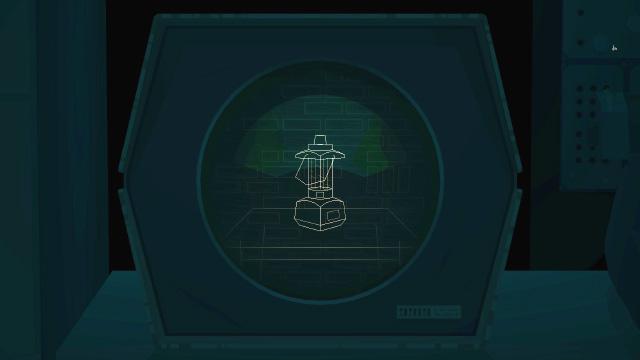
Apart from Samuel Taylor Coleridge and Don Woods, Donald is based on another real person: Ted Nelson and his Project Xanadu. Ted Nelson was an early pioneer of information technology and is credited for coining the terms “hypertext” and “hypermedia”, interconnected digital media where the sequentiality of consumption can be chosen freely by the consumer. The most widely known implementation of hypertext is HTML (Hypertext Markup Language), the basis of the World Wide Web.
As early as 1960, Ted Nelson began working on a computer network named Xanadu aimed to facilitate the creation, distribution and use of as well as payment for hypermedia. He documented his long-term work in the books “Computer Lib / Dream Machines” (1974) and “Literary Machines” (1981). The actual launch of Xanadu has been delayed, and delayed, and delayed again. While Ted Nelson, safely stowed away in his ivory tower, has been plotting the digital revolution for years on end, much more pragmatic realizations of his visions have long conquered the world. However, neither the success of WWWW nor the appearance of Wikis were able to dissuade Nelson from continuing the pursuit of his project. Hence, he, much like Donald, keeps working on Xanadu until this very day.
In 2013 Nelson published a fully functional version for the first time – OpenXanadu. What might have been revolutionary 40 years ago, has a strangely archaic taste today which is not only owed its peculiar keyboard control scheme. Failed because of his own expectations, the once visionary project is now just a footnote in Internet history.
Some original projects have found their way into the “Xanadu” of Kentucky Route Zero: The “Magic Matrix Mixer Mountain” is an art installation from 2009 in which Cardboard Computer developers Jake Elliott and Tamas Kemenczy were involved. For one evening, they made a mountain of old and derelict hardware which then served as the basis for a sound and video installation. The “Magic Matrix Mixer Mountain” closely resembles an early concept for the „Xanadu”-designs.
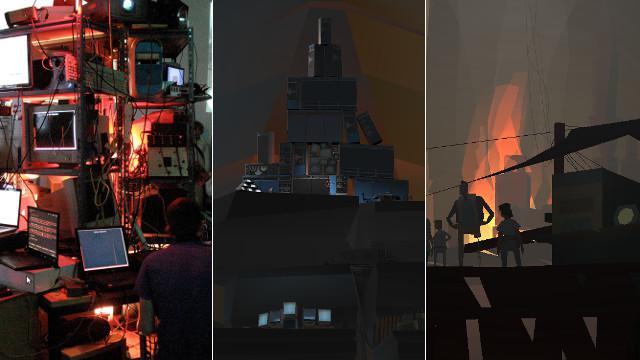
That’s all regarding Donald. Let us now go back to his assistant, the mathematician “Weaver” (Marquez), who accompanies the “people from another place” at the end of the Xanadu simulation, and provides a good excuse to shed some more light on the mathematical themes alluded to in Kentucky Route Zero.
For instance, our main character, Conway, has probably been named after a famous mathematician. Even though John Horton Conway has worked in numerous mathematical fields, he is probably most widely known for his work in game theory. He designed The Game of Life in 1970. It’s regarded as the first art game ever. Essentially, it is a game-like implementation of mathematical automata theory. Conway’s Game of Life had a huge impact on the development of computers and remains a relevant topic for computer science still. Even the now commonly used Hacker Emblem resembles a so called “Floater” from the Game of Life.
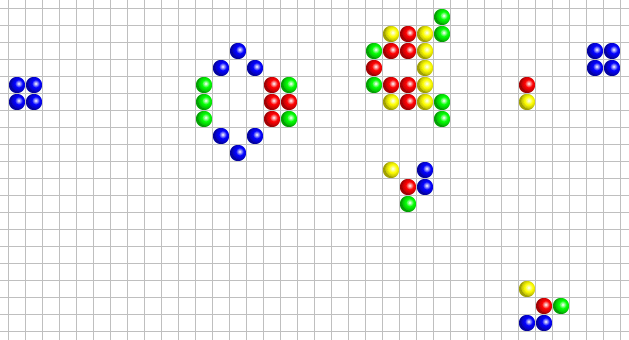
References to Conway’s work, like the repeated appearance of the number 8192, can be found everywhere throughout Kentucky Route Zero. According to the developers, this is due to the fact that all computers in Kentucky Route Zero are 13-bit-Computers (2^13 = 8192). The Conway base 13 function is a function developed by Conway using a decimal system with base 13 and serves as a counterexample to the converse of the intermediate value theorem.
Another of Conway’s concepts relevant for Act Three is the term monstrous moonshine. Moonshine, for Conway, means “crazy idea” and it’s a term that is used in string theory to describe a quite unexpected relationship between the monster group M and modular functions, particularly the j-function. Later in the game, upon reaching the „Hard Times”-distillery, one cannot help but wonder if the developers have realized their own version of “monstrous moonshine”, thus exploiting the multiple meanings of the term.
„This machine was invented by McBean. But we all make up the parts, cut us up and take our hearts.“
– NOFX, This Machine Is 4
The design of the subterranean distillery mirrors the work of Ken Adam. The legendary set designer created the iconic lairs of many Bond villains. The larger than life villains and their plans for world destruction were realized in Adam’s futuristic industrial complexes where countless minions were absorbed in undefinable tasks which kept the machine of evil working smoothly.
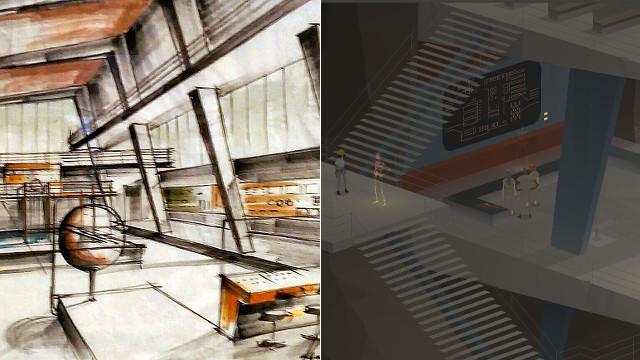
Or, maybe the design references real-life counterparts to Bond villains, like former energy mogul Enron, whose headquarters served as a model for the „Hard Times” distillery and the Kentucky Electrical Company. Enron’s insolvency is a prelude for our current financial crisis. The ramifications of this crisis still play a major role in the third Act, especially looking at the distillery’s business practice. In a state somewhere between bonded labor and feudalism, its employees are helpless victims of capitalism.
“If ever I to the moment shall say: Beautiful moment, do not pass away! Then you may forge your chains to bind me. Then I will put my life behind me.”
– Johann Wolfgang von Goethe, Faust
Towards the end of our factory tour, the developers reintroduce the idea of the Faustian bargain, which has been referenced in the song What Would You Give In Exchange For Your Soul by the Bedquilt Ramblers in the game. Similar to Dr. Faust, Conway sells his soul in exchange for knowledge.
With Act Three, we have reached the precipice of our journey. It will probably go downhill from here. This may conserve energy, but noticing all the burned bridges that can be found in Act Three, things are not looking at too well for our heroes. Of course, there are still some things we could talk about: The musical highlight of the third Act Too Late to Love You, the reference to video pioneer Phil Morton hidden on the Zero and last but not least – Olivia Newton John. Let’s leave it at that for today, though.
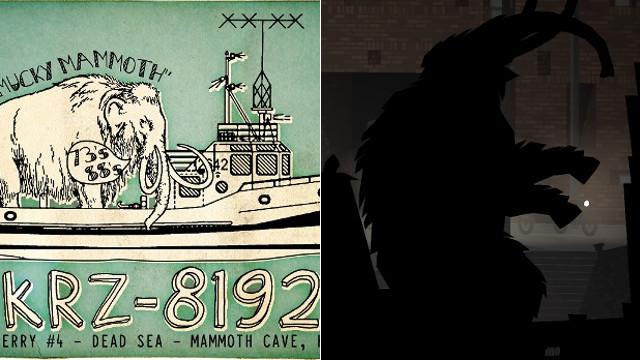
When we started this series, the discussion about Kentucky Route Zero consisted almost exclusively of David Lynch references and the question about when the next episode was going to be released. Luckily, this has changed. Some interesting articles have been published and even on the Steam forums, the game is discussed with quite a lot of sophistication. We are very glad to see that and therefore happily refer our readers, who would like to know where in the latest episode Here and There Along the Echo they can find an encryption of an excerpt of the Propertian Elegies: They can find it here, in a forum entry by our reader Vshadow. We tip our hats to Vshadow and must admit: We’d would have never come up with that particular interpretation ourselves.
Guest author Magnus has neither a Facebook nor a Twitter, but on Wednesday mornings you just might run into him at the Stadtbad Schöneberg in Berlin.